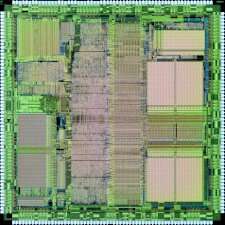Enhancing drug testing with human body-on-chip systems

The U.S. Food and Drug Administration (FDA) approves only 13.8% of all tested drugs, and these numbers are even lower in "orphan" diseases that affect relatively few people.
Part of the problem lies in the imperfect nature of preclinical drug testing that aims to exclude toxic effects and predetermine concentrations and administration routes before drug candidates can be tested in people. How new drugs move within the human body and are affected by it, and how drugs affect the body itself, cannot be predicted accurately enough in animal and standard in vitro studies.
"To solve this massive preclinical bottleneck problem, we need to become much more effective at setting the stage for drugs that are truly promising and rule out others that for various reasons are likely to fail in people," explains Prof. Donald Ingber, M.D., Ph.D., founding director of Harvard University's Wyss Institute for Biologically Inspired Engineering, co-author of two new studies on the subject published in Nature Biomedical Engineering on January 27, 2020.
Co-led by Dr. Ben Maoz of Tel Aviv University's Department of Biomedical Engineering and Sagol School of Neuroscience and over 50 colleagues, a team of scientists at TAU and Harvard have now devised a functioning comprehensive multi-Organ-on-a-Chip (Organ Chip) platform that enables effective in-vitro-to-in-vivo translation (IVIVT) of human drug pharmacology.
"We hope that this platform will enable us to bridge the gap on current limitations in drug development by providing a practical, reliable, relevant system for testing drugs for human use," says Dr. Maoz, co-first author of both studies and former Technology Development Fellow at the Wyss Institute on the teams of Prof. Ingber and Prof. Kevin Kit Parker, Ph.D., the latter of whom is also a leading author of both studies.
In the first of two studies, the scientists developed the "Interrogator," a robotic liquid transfer device to link individual "Organ Chips" in a way that mimics the flow of blood between organs in the human body.
Organ Chips are microfluidic devices composed of a clear flexible polymer the size of a computer memory stick that contains two parallel running hollow channels separated by a porous membrane and independently perfused with cell type-specific media. While one of the channels, the parenchymal channel, is lined with cells from a specific human organ or functional organ structure, the other one is lined with vascular endothelial cells presenting a blood vessel. The membrane allows the two compartments to communicate with each other and to exchange molecules like cytokines and growth factors, as well as drugs and drug products generated by organ-specific metabolic activities.
The team then applied their Interrogator automated linking platform and a new computational model they developed to three linked organs to test two drugs: nicotine and cisplatin.
"The modularity of our approach and availability of multiple validated Organ Chips for a variety of tissues for other human Body-on-Chip approaches now allows us to develop strategies to make realistic predictions about the pharmacology of drugs much more broadly," says Prof. Ingber. "Its future use could greatly increase the success rates of Phase I clinical trials."
The researchers accurately modeled the oral uptake of nicotine and intravenous uptake of cisplatin, a common chemotherapy medication, and their first passage through relevant organs with highly quantitative predictions of human pharmacokinetic and pharmacodynamic parameters.
"The resulting calculated maximum nicotine concentrations, the time needed for nicotine to reach the different tissue compartments, and the clearance rates in the Liver Chips in our in vitro-based in silico model mirrored closely what had been measured in patients," concludes Dr. Maoz.
The multidisciplinary research project is the culmination of a Defense Advanced Research Projects Agency (DARPA) project at the Wyss Institute. Several authors on both studies, including Prof. Ingber, are employees and hold equity in Emulate, Inc., a company that was spun out of the Wyss Institute to commercially develop Organ Chip technology.
More information: Anna Herland et al, Quantitative prediction of human pharmacokinetic responses to drugs via fluidically coupled vascularized organ chips, Nature Biomedical Engineering (2020). DOI: 10.1038/s41551-019-0498-9
Richard Novak et al. Robotic fluidic coupling and interrogation of multiple vascularized organ chips, Nature Biomedical Engineering (2020). DOI: 10.1038/s41551-019-0497-x




















